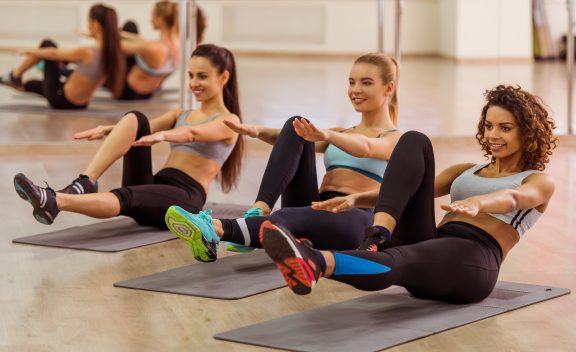“For me, fitness is not just about hitting the gym; it is also about an inner happiness and an overall well-being.”- Rakul Preet Singh
The post-modern world, Information Age, or Fourth Industrial Revolution is not naturally conducive to being outdoors and active during the working day.
The First Industrial Revolution (1760 to circa 1840) was the first step in the move towards the automation and mass production of goods and services. In other words, income-generating activities moved from manual (physical), agrarian labor to automated, factory-driven mechanisms. People no longer worked outside; they were forced into large factories where they had to stand or sit in one position long stretches at a time, using machinery driven by water or steam to mass-produce goods.
The mechanisation and automation of manufacturing processes, including agrarian activities, has continued from the First Industrial Revolution, through the Second and Third Industrial Revolutions, and into the Fourth Industrial Revolution where the emphasis is placed on the use of Artificial Intelligence, Machine Learning, Robotics, and the Internet of Things to run our daily lives.
Contents
Mechanisation and Industrialisation: The pros and cons
The primary benefits of living in the Industrial Revolution include the accessibility and affordability of goods and services. Additionally, medical research has resulted in the eradication of certain diseases like Polio across the world. And improved transportation mechanisms have put measures into place that allow the movement of goods and people, which in turn, has led to the improved distribution of goods and services like retail products, medical supplies, and medical professionals from the larger cities to the smallest villages.
However, apart from all these advantages, the biggest challenge of living during this time is the fact that most adults spend most of their working lives sitting behind a desk staring at an electronic device such as a computer, laptop, tablet, or smartphone. Additionally, the lifestyle pace of the world has increased dramatically to the extent that its expectations ensure that the average person battles with performance-related stress and anxiety daily.
Ergo, we live in an environment that demands instant gratification. This fact has spilled across all sectors of society from commerce to the home environment. The outcomes of this behavior include obesity, lack of physical fitness, and mental and emotional health conditions related to extreme inactivity and constant drive to meet the requirements of the “instant society.”
Reasons why you should exercise
One of the fundamental reasons why you should exercise is to counter the negatives of living in the Fourth Industrial Revolution with all of its pros and cons.
Additionally, as the quotation mentioned above by Rakul Singh notes, fitness is not only physical. It also includes mental and emotional fitness. Furthermore, it is essential to be cognisant of the fact that these three fitness categories (physical, mental, and emotional fitness) are all dependent on one another. You cannot have mental and emotional health and wellbeing without physical fitness. And, one of the by-products of physical exercise is mental and emotional health.
The mental and emotional health advantages of physical fitness are well-documented and researched. The article titled “The Mental Health Benefits of Exercise” clearly states that not only is “exercise good for your body; it also effective in dealing with depression, anxiety, and stress.”
How long should you exercise?
The World Health Organisation recommends that adults between the ages of 18 and 64 years old should do at least “ 150-minutes of moderate-intensity aerobic physical activity” during the week. Another way to look at this figure is to break it down into the number of minutes an adult should exercise per day. Therefore, an adult should exercise at least 30 minutes per day, five days a week. Also, moderate-intensity aerobic activities include running, walking briskly, swimming, or going to the gym.
Where do you exercise: Outdoors or in a fitness center?
Thus, the question that must be asked is whether you should use a fitness center or workout outdoors. The concise answer to this question is that there are merits to both exercise locations or venues.
The first thing to consider is the climate where you live. One of the negatives of industrialisation is climate change. Ergo, winters are getting colder, and summers are getting hotter. And, both seasons are interspersed with unprecedented, harsh weather events that make exercising outdoors challenging. Thus, for all of the reasons mentioned above, utilising the fitness center or gym to exercise is the logical alternative.
Final thoughts
In summary, the only negotiable or decision to be made is where you exercise. Exercising at least thirty minutes five times a week is non-negotiable. Physical fitness is imperative to thriving in our post-modern world.






Comments are off this post!